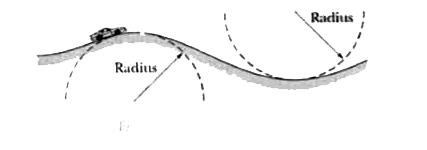Car-driven by a scientist is
Plymouth
Wide mouth
Narrow mouth
None of these
The correct Answer is:A
Similar Questions
The biogeochemical cycle that is directly driven by sunlight is
View Solution(a) Solar cells are used to provide the electric current to charge the batteries of a car driven by an electric motor. Describe the energy changes which take place. (b) What differences would you expect in the charging of car batteries (i) in bright sunlight (ii) on a cloudy day (iii) at night ?
View Solution
Knowledge Check
A car is travelling on a road. The maximum velocity the car can attain is 24ms−1 and the maximum deceleration is 4ms−2. If car starts from rest and comes to rest after travelling 1032m in the shortest time of 56 s, the maximum acceleration that the car can attain is
A1.2m/s2B3.6m/s2C6m/s2D12m/s2Statements: All scientists are researchers.
Some researchers are teachers.
Conclusions: I No scientist is a teacher.
II Some teachers are scientists.Aif only conclusion I followsBif only conclusion II followsCif either I or II followsDif neither I nor II follows andStatements:- All doctors are professor. All professors are leaders. No leader is scientist.
Conclusions (I) No scientist is doctor. (II) No scientist is professor.A(a) If only conclusion I followsB(b) If only conclusion II followsC(c) If either conclusion I or II followsD(d) If both conclusion I and II follow
The biogeochemical cycle that is directly driven by lightening is
View SolutionIn Fig a car is driven at constant speed over a circular hill and then into a circular valley with the same radius. At the top of the hill, the normal force on the driver from the car seat is 0. The driver's mass is 80.0 kg. what is the magnitude of the normal force on the driver from the seat when the car passes through the bottom of the valley?

View SolutionYou are shown a photo of a car driven on a vertical-inside wall of a huge cylinder of radius 50m. The coefficient of static friction between the car tires and the cylinder is μs=0.8. The minimum speed (in ms ) at which the car can be driven like that is 5x. Find x.
'(##CEN_KSR_PHY_JEE_C07_021_Q12##)'
View SolutionMarket-driven strategies include
View SolutionThe key challenge to market -driven strategy is
View Solution
